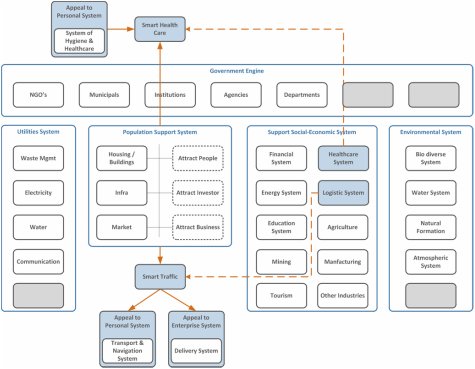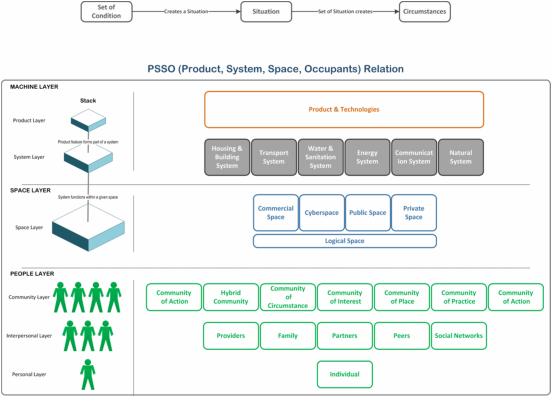|
In the following smart city discussion, we will present a new framework that will form the third leg of the StAF framework - the city itself. Within this blog, you might have come across the word StAF - it has so far in the blog been used to map the interrelation between:
SMART CITY Most Smart City initiative in discussion today emphasizes one of the following:
City Development Model While there are many city development models, the concern or rather the motivation of city planners is more or less along these lines:
The Tale of Two Smart Initiatives Smart city is a large topic. Our intention is to provide some logical framework for which one can start to map and position smart city initiatives. We use various other complementary framework and model that already presented in earlier blogs to help us. For a start, this blog will break out to 2 further subtopics:
City Space Stack In the earlier retail blog, we briefly introduced PSS stack - which shows how a product forms part of a system and in turn the system lends its service to a particular space. While the stack remains the same, the relevance of the system is expanded to a larger space - the city space. Our earlier blog regarding PSS stack have quietly assumed the passive role of occupants in a given space. It is extremely important for us to understand the role and the impact of systems on space occupants in a space as large and as complex a city. In a private space, S2P services are directed at individuals or people with relationship with the individual concerned. In a city space, individuals form part of a community and these communities in turn defines the city. The following diagram shows the relevance of each stack layer to the city components. Communities
An individual is the most basic building block within the socio-ecological model. The rest of the tier in the model is simpler a collective grouping of individuals. In a nutshell:
0 Comments
|
BackgroundUsing a combination of StAF and R3MAGICS, this blog post provides architecture analysis of the trend and major players in the smart things market. R.3.M.A.G.I.C.S is short for Robotics, 3D Printing, Mobility, Analytics, Gamification, IoT, Cloud and Social platform. It encapsulates the key elements that will change the social-economic fabric in the coming years. StAF is short for Strategy-driven Architecture Framework. ArchivesCategories |



 RSS Feed
RSS Feed
